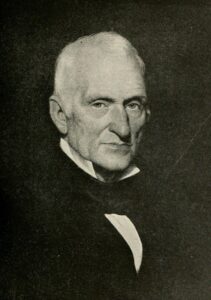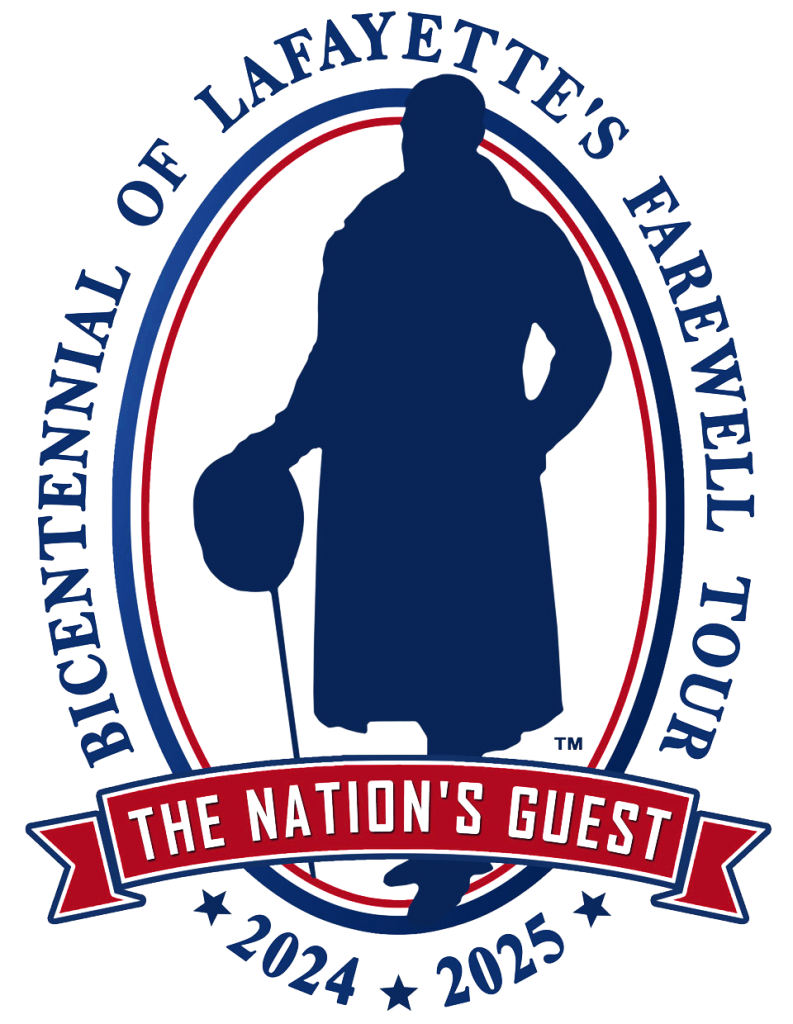This is part of a series on Lafayette’s visit to Massachusetts August 23, 1824 to September 3 1824.
A cavalcade of about forty met Lafayette at the town line. Mr. John Keyes addressed him and invited him to visit the town. Artillery posted on the brow of the hill east of the meeting-house fired a thirteen gun salute.
Five military companies under the command of Col. Shattuck paraded – The Weston Light Infantry under Captain Fiske, the Acton Davis Blues under Capt Davis, The Concord Light
Infantry under Captain Jarvis, the Concord Artillery under Lieut Stacy and the Concord Militia Company under Capt Wright.
The cavalcade at the line was replaced by military escort. The crowd cheered. As he passed through an narrow avenue a twenty four gun salute was fired near where the liberty pole stood in 1775.
Teachers and pupils were ranged in a line extending nearly the whole length of the common.
There was an extensive bower with tables. The front of the bower bore the inscription
In 1775 the people of Concord met the enemies of liberty-
In 1824 they welcome the bold Assertor of the Rights of Man
LA FAYETTE
Samuel Hoar Jr. addressed Lafayette

In 1844 Massachusetts appointed Hoar as a commissioner to reside in South Carolina to bring suits testing the constitutionality of South Carolina’s practice of seizing African-American sailors in port in South Carolina. If ship owners did not pay fines, the sailors would be enslaved. South Carolina made it clear that Hoar was unwelcome.
“The inhabitants of Concord, by this delegation welcome you, General, to their village. We thank you for affording us an opportunity here to offer our humble tribute of gratitude for services, long since rendered, but still held in lively recollection. You, Sir, now behold the spot on which the first forcible resistance was made to a system of measures calculated to deprive the whole people of these States of the privileges of freemen. You approved this resistance. A just estimate of the value of rational liberty led you disinterested, to participate with strangers in the toils, the privations and the dangers of an arduous contest. From the 19th day of April 1775 here noted in blood, to the memorable day in Yorktown, you heart and your sword were with us. Ten millions of grateful people now enjoy the fruits of this struggle. We can but repeat to you, Sir, the cordial affectionate, respectful welcome offered you at your first arrival on our shores, and which we are assured will be reiterated wherever you move on American ground.”
In his reply Lafayette made allusion to scenes of April 19, 1775.
The ladies had the honor of partaking their refreshment at the same board as Lafayette.
After coffee with the ladies he met with veterans of the revolution being introduced by name and shaking hands with him. Then he shook hands with the ladies. Troops marched by and paid him a military salute. He asked about the precise spot where the first gun was fired. He mentioned a gun which had been show to him in Boston purporting to be the gun from which the first shot was fired at Concord. He said that that gun should be preserved – “For, it was the alarm gun to all Europe, or as I may say the whole world. For it was the signal gun, which summoned all the world to assert their rights and become free”
He regretted that he could not visit the North Bridge where the shot was fired.
Cavalry escorted him to the Stow line where he was received by Stow cavalry.
—————————————————————–
Levasseur gave a somewhat different account of the gun incident.
“At the moment when we were going to withdraw from the monument to get back to our carriages, a young man appeared before us, carrying in his hands a long, coarsely formed gun covered with rust; he presented it to the General with a solemnity which led us to presume that this instrument of death was entitled by some special circumstance to the veneration with which he carried it. In a word, we learned that this gun was the one which first answered the fire of the Englishmen. “It is in his hands that the work that you and Washington so gloriously finished began; I am very glad that it makes your acquaintance… .” The General took the gun and examined it with pleasure; each of us also wanted to touch it. In returning it to the young man, the General counseled him to inscribe on the grip the date of April 19, the name of the brave citizen who made so beautiful use of it, and then to place it in a box in order to preserve it from the ravages of time. The young man was touched by this advice and promised to follow it.”
Levasseur’s account is much richer in anecdote than the others but quite a bit weaker on detail. He has the visits to Lexington and Concord taking place on August 31 on the way to Portsmouth.
Robert Gross in his recent book Transcendentalists And Their World devotes attention to Lafayette’s visit to Concord. According to Gross, Lafayette was presented with the musket by an heir of Major John Buttrick in Boston.
The bower where Lafayette was entertained was roped off and only selected veterans were able to meet with him. An angry crowd formed outside with people complaining about the favoritism.
“…although they were not as well dressed nor as educated in society … as those within … their fathers had served the country, some had fought with Lafayette in the battles of the Revolution, and they were as grateful for his services.”
The resentment lingered. The town meeting refused to pay the expenses of the collation.
The visit also incited a feud between Lexington and Concord over where resistance really began.
———————————————————————————————————————————————————-
For information on the bicentennial of Lafayette’s tour check out lafayette200.org.































































































